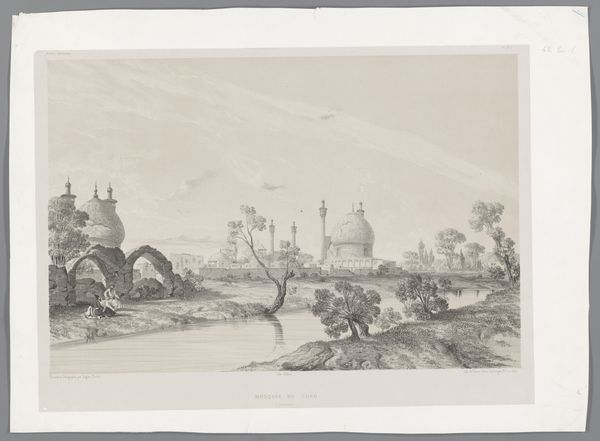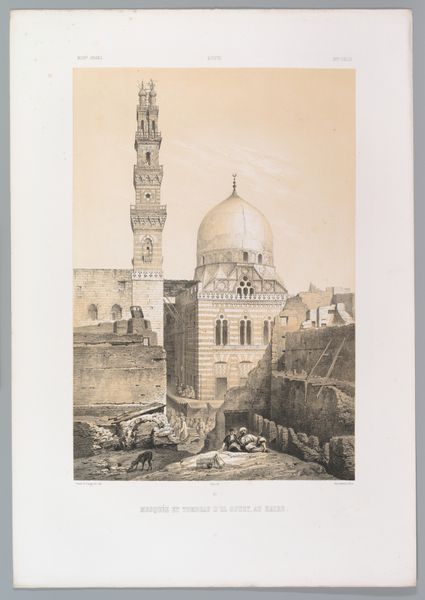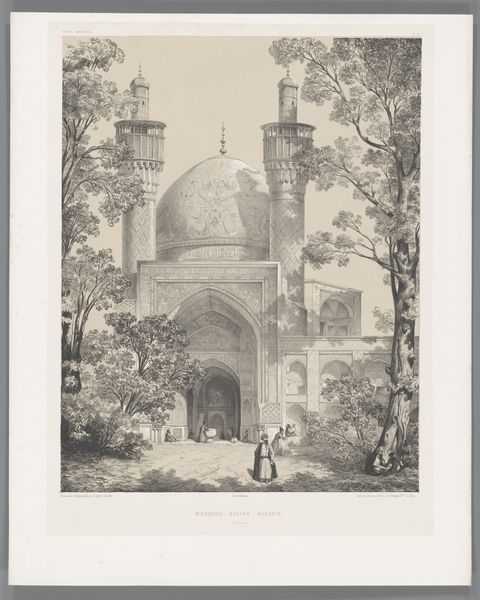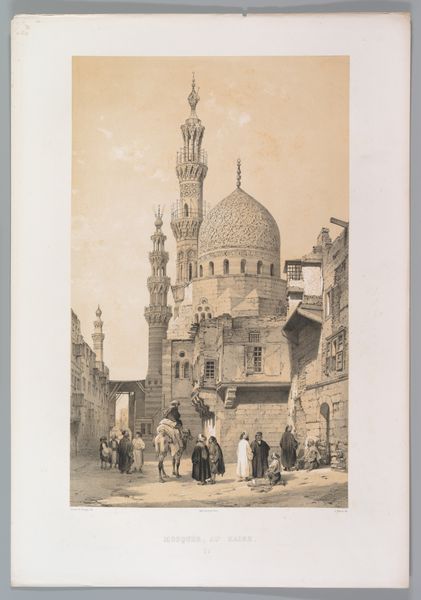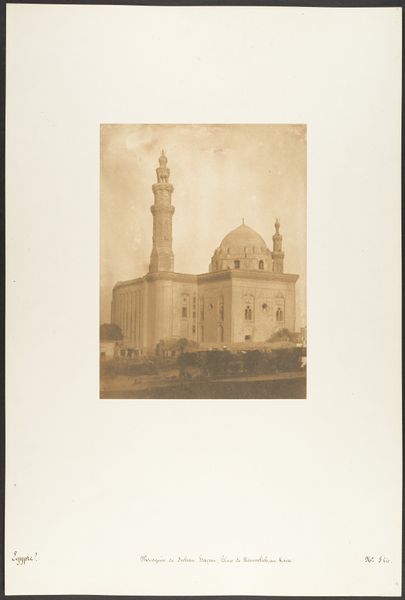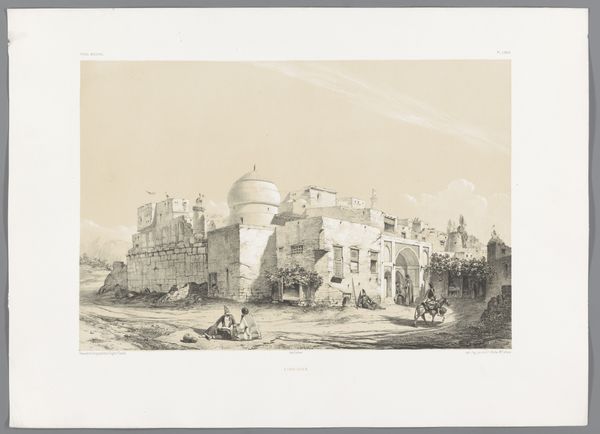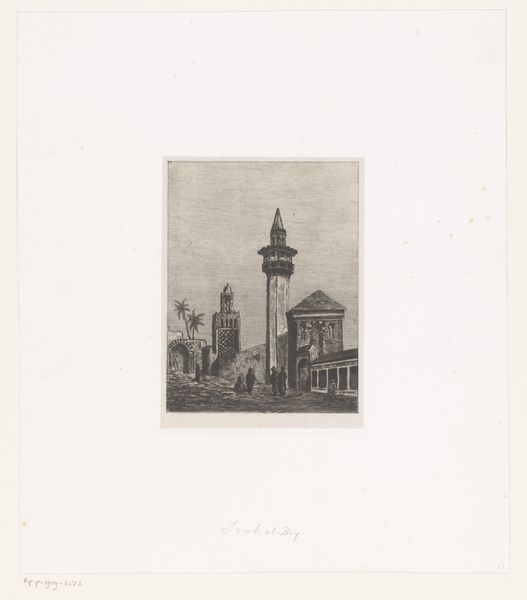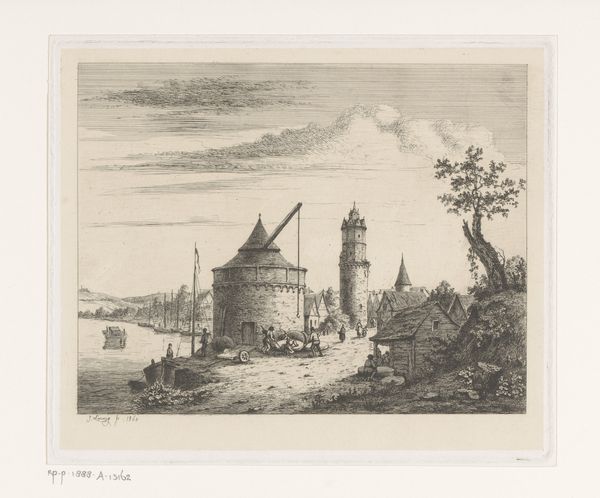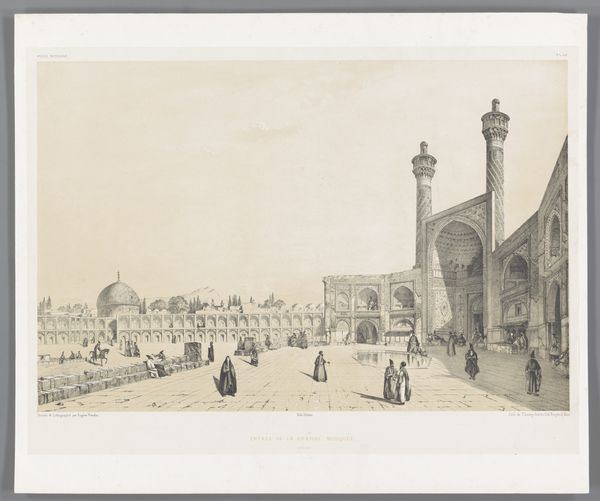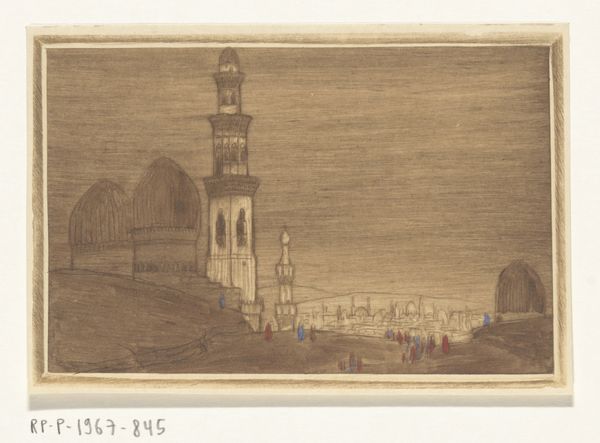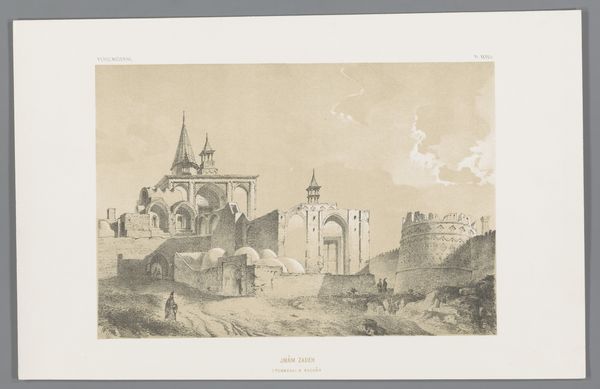
Baba Sukhte moskee met de Bagh-e-Ghoushkhane minaret in Isfahan 1843 - 1854
0:00
0:00
print, engraving
# print
#
landscape
#
perspective
#
line
#
cityscape
#
islamic-art
#
engraving
Dimensions: height 568 mm, width 395 mm
Copyright: Rijks Museum: Open Domain
Eugène Flandin made this print of the Baba Sukhte Mosque in Isfahan in the 19th century. As an artist, Flandin worked in a period when European powers were expanding their empires and knowledge through colonial projects. Here we see a religious building in Iran, rendered through the Western artistic tradition of detailed architectural drawing. The effect is to categorize and document a cultural artifact from a foreign land. Note the human figures, which lend scale to the architecture and suggest a narrative of everyday life. Isfahan, with its rich history and architectural heritage, became a subject of interest to European artists and scholars. To understand this image fully, we can research the history of Western Orientalism, as well as the specific political relationships between Europe and Persia during Flandin's time. This print can tell us a great deal about how cultural institutions shape the production and reception of art.
Comments
No comments
Be the first to comment and join the conversation on the ultimate creative platform.
